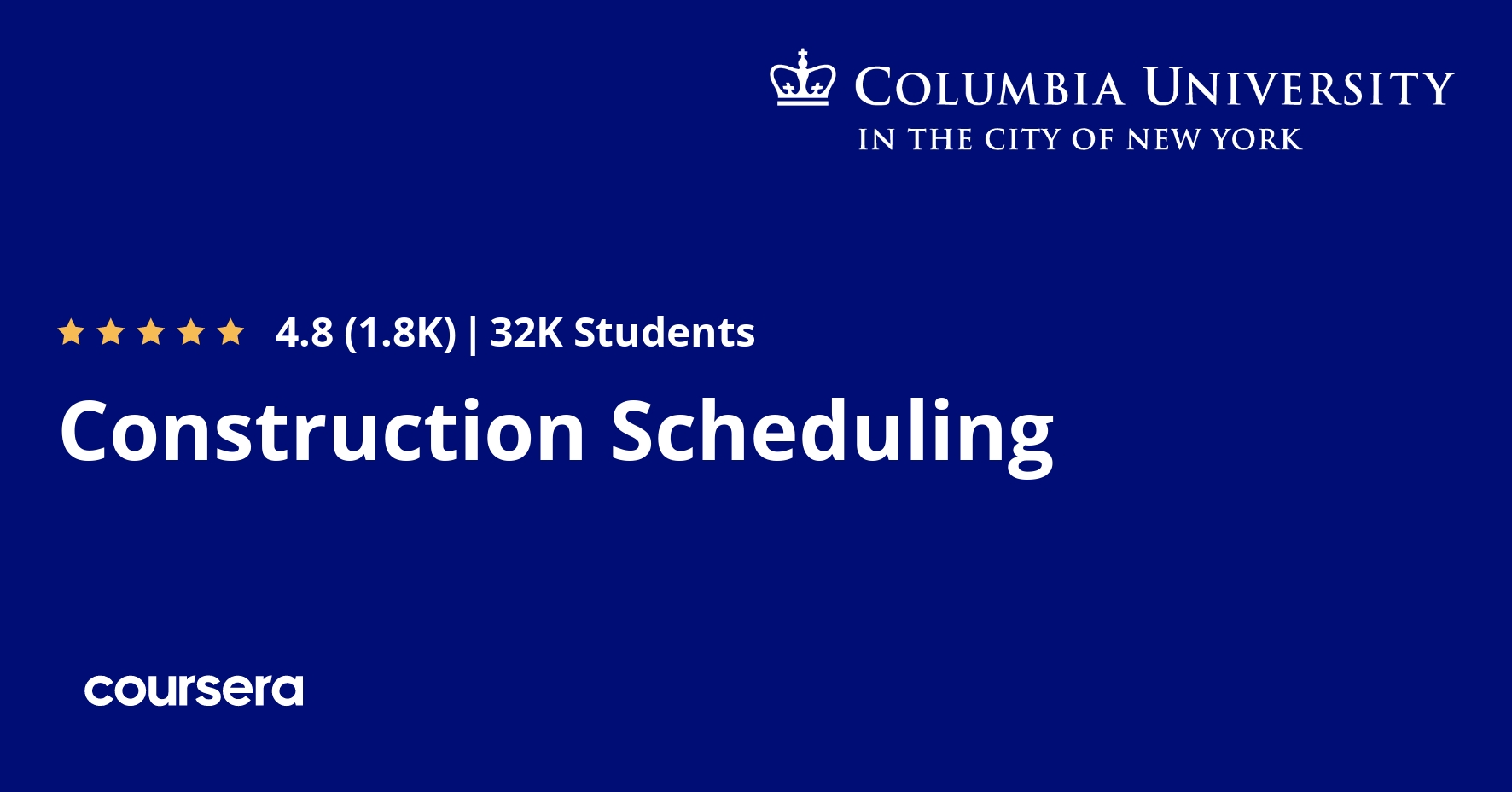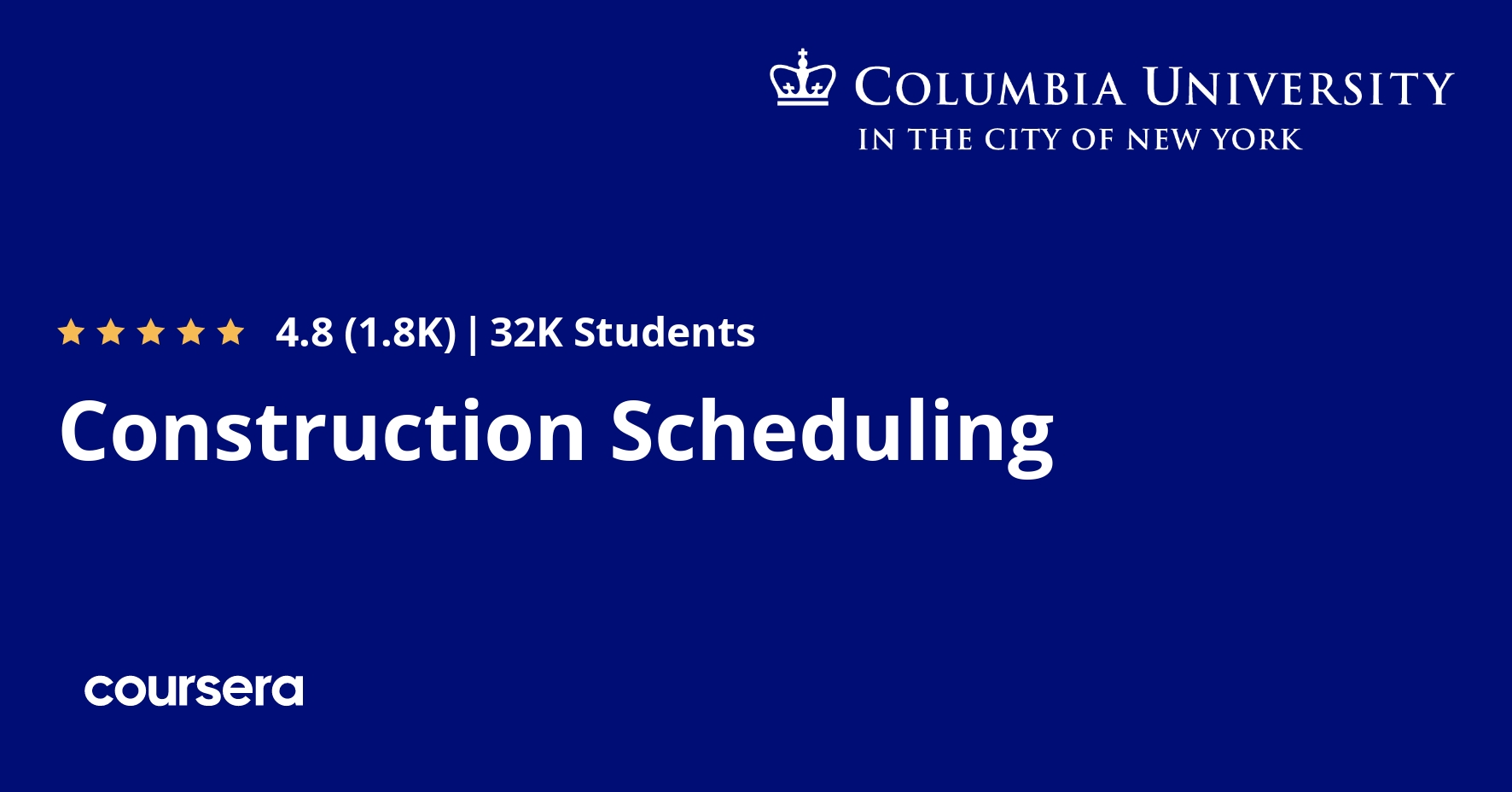Description
This course focuses on learning how to develop and manage a schedule. The first module provides an overview of the Construction Scheduling course. The second module introduces bar or Gantt charts and how they are used as scheduling tools. During the third module, learners will create activity precedence diagrams, also referred to as activity on node diagrams, which graphically represent the construction activities in a project and their relationships. The fourth module provides an overview of the types of construction activity relationships encountered in a construction project and how to represent them in an activity precedence diagram. Forward and backward pass calculations are covered in the fifth module, and during the sixth module, Professor Odeh discusses the importance of critical paths, including what it is and why it is important.
By the end of this course, you will be able to:
-Discover key project scheduling techniques and procedures
-Learn how to develop and manage a schedule, and understand scheduling tools such as bar charts, activity on arrow, and activity on nodes
-Explore the multiple relationships that connect all the construction activities in our project from start to finish
-Learn about creating a network diagram, defining the importance of the critical path in a project network, and defining project activities float
-Understand the fundamentals of bar charts, precedence diagrams, activity on arrow, Program
-Evaluation and Review Technique (PERT), range estimating, linear project operations, and the line of balance (LOB)
What you will learn
Introduction to Construction Scheduling
The first module provides an overview of the Construction Scheduling course and the topics that will be covered. Learners will discover the relationships connecting construction activities, how to perform scheduling procedures, how to determine critical path and more. Professor Odeh will describe the differences between calendar dates and work dates and teach how to deal with uncertainty in construction projects.
Bar (Gantt) Charts
The second module introduces bar or Gantt charts and how they are used as scheduling tools. Bar charts represent a project work item or activity as a time scaled bar; the length of which represents the planned duration of a construction activity.
Activity Precedence Diagrams
In this module, learners will create Activity Precedence Diagrams, also referred to as Activity on Node Diagrams, which graphically represent the construction activities in a project and their relationships.
Types of Construction Activity Relationships
This module provides an overview of the types of construction activity relationships encountered in a construction project and how to represent them in an activity precedence diagram.
Forward and Backward Pass Calculations
Forward and Backward Pass Calculations are covered in this module. Forward Pass Calculations determine the minimum dates at which each construction activity can be performed and, ultimately, the minimum duration of a construction project. Backward Pass Calculations compute the latest dates by which each construction activity can be performed without increasing the projects minimum duration.
Critical Path
Professor Odeh discusses the importance of critical path in this module including what it is and why it is important. Learners will identify a critical path in a project and how to determine a critical path in different relationships.
Activity Floats
Professor Odeh introduces the types of floats in a construction project including; total float, free float, interfering float and independent float.
Understanding Work Dates and Calendar Dates
In this module, the difference between working dates and calendar dates is explained and how to chart both in a project plan.
Activity on Arrow
Activity on Arrow diagrams are the topic for this module. Professor Odeh will discuss how to draw an activity on arrow diagram and how to number the nodes. Forward and Backward Pass calculations and determining the duration of a project are also covered.
Program Evaluation & Review Technique (PERT) and Range Estimating
The Program Evaluation and Review Technique (PERT) is introduced in this module which relates to uncertainty in estimating the duration of construction activities in a project schedule. PERT helps project managers determine the probability of a project being completed in a certain number of days.
The Role of the Scheduler in Construction Management
Jennifer Buermann, of the STV Group, discusses the role of the scheduler in a construction project and how to determine if a project is on track to meet the estimated goals. Also covered are ways to adjust to ensure the project stays on track.
Linear Construction Operations and Line of Balance
Professor Odeh introduces linear construction; projects that have linear, or repetitive, properties. Also covered is the Line of Balance scheduling method which is a way of allocating resources for repetitive processes.
Technology Applications for Scheduling
Dareen Salama, of the STV Group, discusses the technology applications used for scheduling. Dareen provides an overview of the applications used for scheduling development, schedule analysis, sharing and collaboration and visualization.






